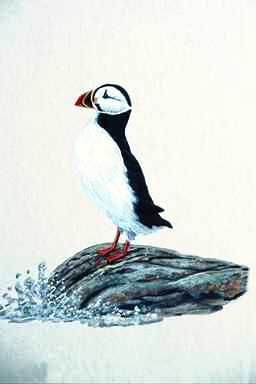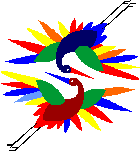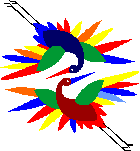
|
|

|
|
North American Indians in the East
Arkansas and Alibamu, Cherokee, Chickasaw,
Choctaw and Catawba, Delaware, Eire,
Huron,
Susquehanna
Chick·a·saw
n. pl. Chick·a·saw or Chick·a·saws
A Native American people formerly inhabiting northeast Mississippi and northwest Alabama, now located in south-central Oklahoma. The Chickasaw were removed to Indian Territory in the 1830s.
A member of this people.
The Muskogean language of the Chickasaw.
Choc·taw
n. pl. Choctaw or Choc·taws
A Native American people formerly inhabiting central and southern Mississippi and southwest Alabama, with present-day populations in Mississippi and southeast Oklahoma. The Choctaw were removed to Indian Territory in the 1830s.
A member of this people.
2. The Muskogean language of the Choctaw.
Hu·ron
n. pl. Huron or Hu·rons
A Native American confederacy formerly inhabiting southeast Ontario around Lake Simcoe, with small present-day populations in Quebec and northeast Oklahoma, where they are known as Wyandot. The Huron traded extensively throughout eastern Canada until the confederacy was destroyed by war with the Iroquois in the mid-17th century.
A member of this confederacy.
The Iroquoian language of the Huron.
Ir·o·quois
n. pl. Iroquois (-kwoi![]() ,
-kwoiz
,
-kwoiz![]() )
)
A Native American confederacy inhabiting New York State and originally composed of the Mohawk, Oneida, Onondaga, Cayuga, and Seneca peoples, known as the Five Nations. After 1722 the confederacy was joined by the Tuscaroras to form the Six Nations. Also called Iroquois League.
A member of this confederacy or of any of its peoples.
Any or all of the languages of the Iroquois.
E·rie
n. pl. Erie or E·ries
A Native American people formerly inhabiting the southern shore of Lake Erie in northern Ohio, northwest Pennsylvania, and western New York. The Erie ceased to exist as a people after being defeated by the Iroquois in the mid-17th century.
A member of this people.
The Iroquoian language of the Erie.
Sus·que·han·nock
n. pl. Susquehannock or Sus·que·han·nocks
A Native American people formerly located along the Susquehanna River in New York, Pennsylvania, and Maryland. The Susquehannock were extinct by 1763.
A member of this people. Also called Conestoga, Susquehanna.
The Iroquoian language of this people.

These were just some of the numerous Indian tribes dwelling in the eastern part of the present-day U.S. when the colonists touched shore.
They spoke hundreds of different languages and dialects, and their cultures varied greatly.
But most of them were farmers and hunters, and their "long houses" were clustered together to form permanent villages. The men were expert hunters and, when necessary, expert warriors. They knew the woods to perfection – a disturbed leaf, the slightest scratch on a rock, each a sign had its own special meaning. The women tended the fields, tanned hides and did the work of the household. They grew corn, beans and squash. Both men and women created beautiful handicrafts.
These East Coast Indians were deeply religious people and staunch followers of their laws and codes of behavior. In the very early days of colonization, the friendship and guidance offered by Indian tribes were often the prime factor in the continued survival of the colonists. The Pilgrims, wintering in 1620-21 in cold and inhospitable present-day Massachusetts, felt they were not alone. They had the Indian, Squanto, by their side, and called him "a spetiall instrument sent of God for their good beyond their expectation".
With pomp and honor, four Iroquois were escorted to London in 1710 to visit the queen of their friends, the English.
It was only later that the conflict in ways of life between the Indians and the colonists led to friction.
In 1848 Choctaw, Cherokee, Chicksaw, Muscogee, and Seminole Indians were driven to Oklahoma, away from the East, on the "Trail of Tears".
Trail of Tears
Savagery of America’s Early History Savagery of
Mass Killings
American Indian Heritage American Month
More on North American Indians
 |
 |
|
|
|
 |
|
 |
|
|

© Swengelsk, KB ® webmaster |
|
|
 |